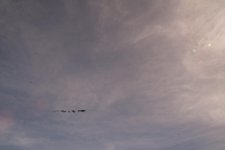Ethanol is not a good substitute for the simpler molecule of Methanol, that evaporate much faster and cleaner since it is less hydroscopic. The surface of the sensor has a filter, not an AA filter, which works by shifting phase of the light passing through it to reducing aliasing by acting as a high Q low pass filter but a protective surface made of the same material as AA filters:LiNbO3 . It is pretty tough, just a little softer than class with a hardness rating of 5Moh (about the same as tooth enamel) and normal window glass is about 5.5Moh. Not many things that are airborne are harder except blowing silica sand which is much harder (7Moh or about 4 times harder than glass) and can scratch the filter surface. With careful cleaning, it is pretty hard to scratch the sensor but it helps to use a new clean swab with each usable because if it sits around you never know what particles stuck to the swab. Probably the most common source of scratches befalls photographers shooting surfing competition...blowing sand,wind and moisture.
Water will not hurt the surface of the sensor but it could easily get into the electrical connections under the sensor so use of water should be limited to damp, not dripping wet swabs. Unless it is filtered distilled water there is a possibility of leaving water marks (mostly salts) so it is best to clean with alcohol before the water fully evaporates.


